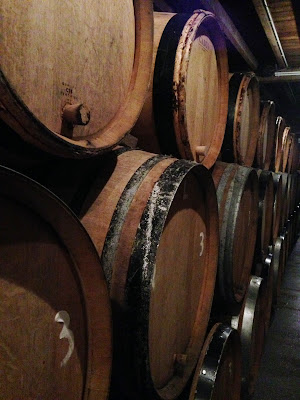For our first wedding anniversary, my wife and I planned a trip to Europe, each picking a city to visit. Her obvious choice for an anniversary location was Paris, but I argue that Brussels is more romantic.
As a craft beer drinker, there are so many opportunities to explore beer from around the country and the world without leaving your home city. If your local never secures a keg of Cantillon Gueuze, you can still trade tastes at a bottle share, or swap with a fellow beer trader. Access is normally simpler and less expensive than a trip to the source.
But for someone who intends to make a living with wild and mixed fermentation, I knew it was important to visit the humble origin of Gueuze, Brasserie Cantillon. I also hoped it would spark my creativity, both in creating new beers and a future brand.
Here is a pictorial overview of our time in Brussels. If you're ever in the area, I highly suggest visiting all of these great places!
Start your trip with this book: Around Brussels in 80 Beers by Joe Stange and Yvan De Baets. Most of my travel tips were stolen from this book, which is pictured above.
Our (or at least my) highlight of the trip was visiting Cantillon. The brewery is over 100 years old and steeped in history. A true pilgrimage! Here are a few photos:
My Beautiful Wife in the barrel room.
Cantillon Barrels for DAYS.
In the attic at Cantillon. This area is mostly used for grain storage. The mill is behind me and the coolship is up the stairs and through the door.
Obligatory Coolship Shot.
Recent brewery improvement: a modern, (semi-)automated bottling line. They were bottling Fou Foune at the time.
After our self-guided tour of Cantillon's beautiful facility, we spent the rest of the day in their cafe. We drank Fou Foune (and Lou Pepe Framboise, and 50°N), ate house-made sausage, and chatted with other visitors.
Aside from the brewery, we visited several lovely bars and restaurants during our stay, each with its own personality. If you make the journey, the following are absolutely worth your precious evenings in this great city:
We spent an evening at Moeder Lambic, a fantastic craft beer bar with two locations in Brussels. Highlights included cask versions of Cantillon fruit beers and Gueuze, as well as Band of Brothers, a 3.5% Saison collaboration between the bar and Brasserie De La Senne.
I very much enjoyed A La Becasse, a small lambic bar near Grand Place. They served a slightly-sweetened (not too sweet) version of Timmermans Lambic: delicious and refreshing.
We stumbled upon A la Mort Subite on a morning walk. Though most of the Mort Subite brands are of the overly-sweetened, faux-lambic nature (it is now owned by Heineken), the Mort Subite Oude Gueuze, served from 750 mL bottles at room temperature, was outstanding.
After getting your Moules Frites and Waterzooi fix, I suggest seeking out Bia Mara near Grand Place for Fish and Chips. Made with salmon, pollock, prawns, or mackeral; perfectly fried with a wide array of sauces. Paired here with a De La Senne Taras Boulba.
If you make your way to any of these spots, or if I've left out any must-visit establishments, please post your recommendations!
















